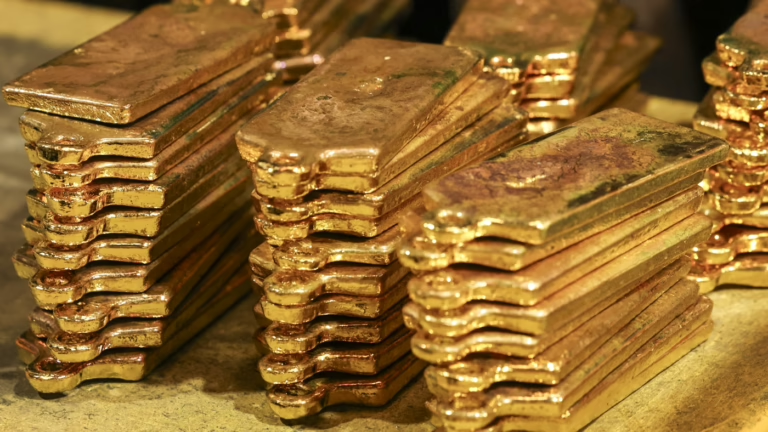Gold is marking its most outstanding performance in nearly five decades, echoing the economic turbulence seen during the inflation and energy crises of 1979.
DAVID GRAY/AFP via Getty Images/AFP
hide caption
toggle caption
DAVID GRAY/AFP via Getty Images/AFP
This week, gold broke through a landmark price level, highlighting the increasing apprehension among investors about the future direction of the U.S. economy.
Recently, the price of gold surpassed $4,000 per ounce for the first time ever, a testament to its remarkable surge of over 50% within this year alone.
Known widely as a “safe haven” dollar-economy/” title=”Bank recapitalisation: Strengthening Nigeria’s financial system for a trillion-… …”>investment, gold tends to attract those seeking protection when traditional markets become unstable. This heightened interest coincides with the unpredictable economic policies under President Trump’s administration, including disruptions to global trade pacts and challenges to the independence of the Federal Reserve.
Despite these uncertainties, Wall Street has remained largely upbeat, with major U.S. stock indices hitting record highs in recent weeks.
Meanwhile, the U.S. dollar has weakened by approximately 10%, raising concerns not only about global financial stability-given the dollar’s pivotal role in international markets-but also about the enduring dominance of the American economy.
Jose Rasco, chief investment officer for HSBC Americas, notes, “Gold generally appreciates when the dollar declines.”
He further explains, “Ongoing policy uncertainties have eroded confidence in the dollar, contributing to its depreciation.”
Gold is currently enjoying its strongest momentum since the inflation and energy crises of the late 1970s.
Looking forward, analysts at Goldman Sachs predict that gold prices could reach $4,900 per ounce by the end of 2026.
Daan Struyven, co-head of commodities research at Goldman Sachs and co-author of the forecast, told NPR that the metal’s price might even exceed these estimates, suggesting a notable “upside risk.”
“While our projections are already optimistic, there is a genuine chance that gold could surpass these levels,” Struyven remarked.
Though gold is often seen as a “safe haven,” investing in it involves certain risks and costs
Gold has historically been valued as a refuge during periods of economic instability, often referred to as the “fear trade.” Its physical presence and lasting worth offer reassurance compared to intangible financial products like stocks or bonds.
“When uncertainty spikes globally, gold typically gains in value,” said Lee Baker, a certified financial planner and CEO of Claris Financial Advisors in Atlanta, in a recent discussion.
However, Baker warns that owning gold comes with limitations. Unlike stocks or bonds, gold does not yield dividends or interest. Investors only realize gains if they sell the metal at a higher price than their purchase.
Physical gold investment also entails practical issues such as the need for secure storage and insurance, which can be costly and inconvenient for some.
For those interested in gold but reluctant to handle the physical asset, Baker suggests gold-backed exchange-traded funds (ETFs) as a practical alternative that allows exposure without direct ownership.
More importantly, the recent surge in gold’s appeal underscores the value of diversifying investment portfolios beyond just equities.
“The timeless advice of not putting all your eggs in one basket remains essential,” Baker emphasized. “Diversifying across various asset classes is key to managing risk.”






















